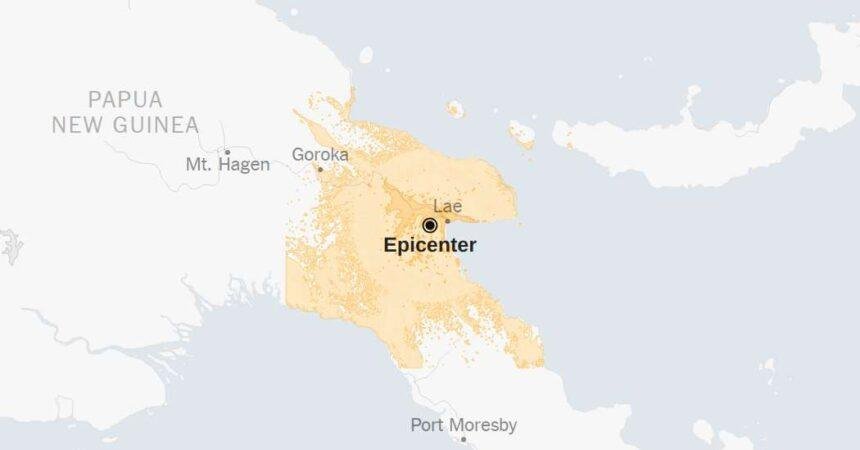Strong Earthquake Strikes Papua New Guinea: A Closer Look
A significant earthquake measuring 6.6 on the Richter scale struck Papua New Guinea on Tuesday evening, sending shockwaves through the region. According to the United States Geological Survey (USGS), the earthquake occurred at 9:05 PM local time, approximately 16 miles southwest of Lae, a major city in the country. This seismic event has raised concerns about potential aftershocks and the overall impact on the local population.
Understanding the Earthquake’s Impact
The earthquake’s epicenter was located in a region known for its geological activity. Papua New Guinea sits on the Pacific Ring of Fire, an area characterized by frequent earthquakes and volcanic eruptions due to tectonic plate movements. This particular earthquake is part of a broader pattern of seismic activity that has historically affected the region.
Seismologists are currently analyzing the data to determine if the earthquake’s magnitude may be revised. The USGS has indicated that additional information could lead to updates in the shake-severity map, which categorizes the intensity of the tremors experienced by residents.
Historical Context of Seismic Activity in Papua New Guinea
Papua New Guinea has a long history of significant earthquakes. In 2018, a powerful 7.5-magnitude earthquake struck the Highlands region, resulting in widespread destruction and loss of life. The country’s rugged terrain and often remote communities complicate rescue and recovery efforts following such natural disasters.
The geological features of Papua New Guinea, including its mountainous landscapes and dense forests, can both mitigate and exacerbate the effects of earthquakes. While the natural environment may absorb some seismic energy, it can also hinder emergency response efforts, making it challenging for aid to reach affected areas quickly.
Community Response and Preparedness
In the wake of the earthquake, local authorities and emergency services are on high alert. The government has urged residents to remain vigilant and prepared for potential aftershocks, which are common following significant seismic events. The USGS has noted that aftershocks can occur within a week of the initial quake, and residents are advised to have emergency plans in place.
Community preparedness is crucial in regions prone to earthquakes. Educational programs aimed at teaching residents about earthquake safety and response strategies can significantly reduce the risks associated with such natural disasters. Local organizations often play a vital role in disseminating information and resources to help communities prepare for and respond to seismic events.
The Role of Technology in Earthquake Monitoring
Advancements in technology have improved the ability to monitor and respond to earthquakes. The USGS employs a network of seismometers and other instruments to detect seismic activity in real-time. This data is crucial for issuing timely alerts and providing information to emergency responders and the public.
In addition to traditional monitoring methods, mobile applications and online platforms have emerged, allowing individuals to receive immediate updates about seismic events. These tools can be invaluable in enhancing community awareness and preparedness, particularly in regions like Papua New Guinea, where access to information can be limited.
Conclusion
The recent earthquake in Papua New Guinea serves as a stark reminder of the region’s vulnerability to seismic activity. As authorities assess the situation and prepare for potential aftershocks, the importance of community preparedness and technological advancements in monitoring cannot be overstated. The resilience of the local population, combined with effective emergency response strategies, will be crucial in navigating the aftermath of this natural disaster. As the situation develops, ongoing updates from the USGS and local authorities will be essential for keeping residents informed and safe.










